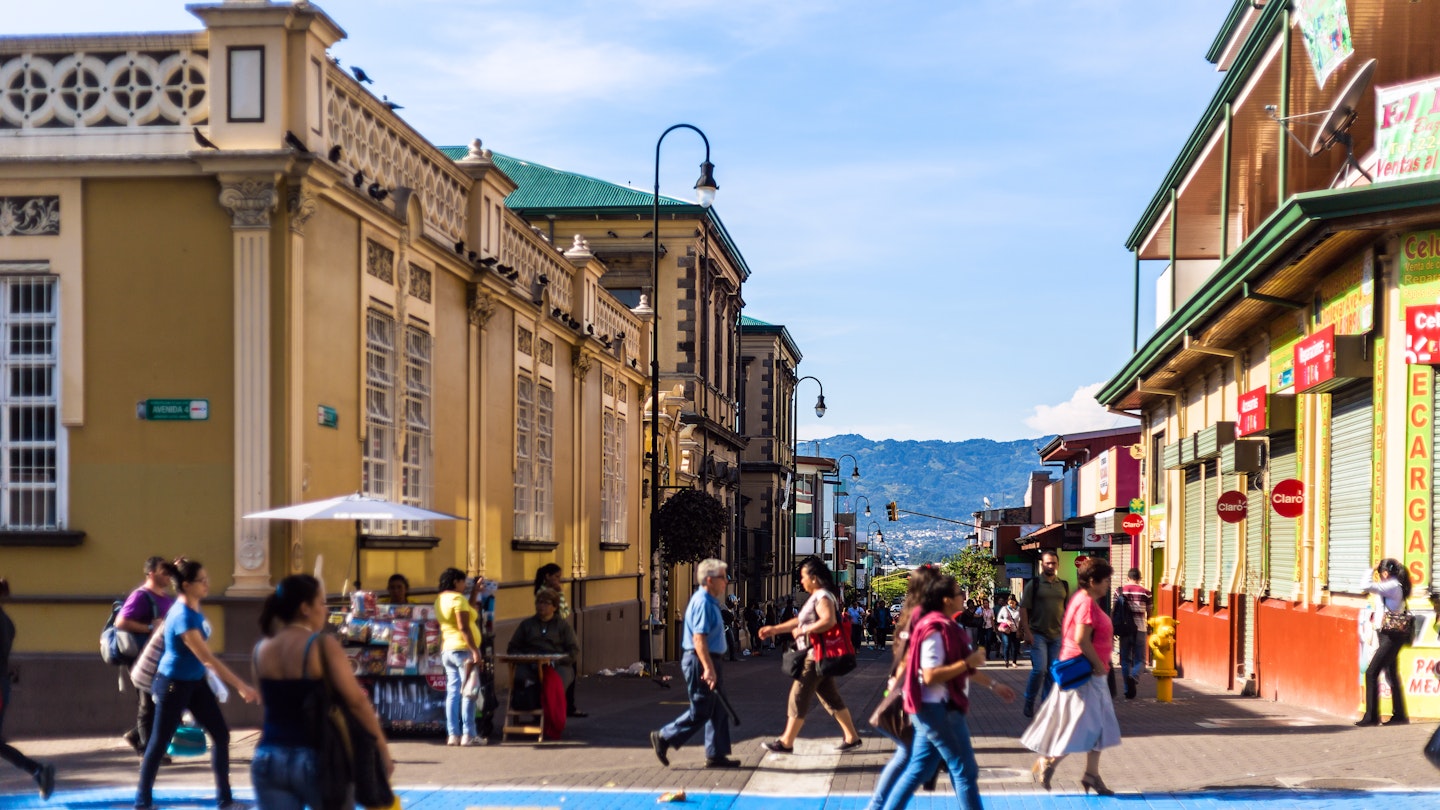San José has changed a lot since 1821, when it was dubbed the new capital of Costa Rica.
That sleepy town grew steadily through the decades, swallowing up pueblos (villages) and turning them into barrios (neighborhoods). Each fragment of San José remains small and distinct; you may not realize you’re leaving one neighborhood and entering another, but the atmosphere may shift the moment you cross a street.
If you’re staying in the city, there’s a wealth of urban communities to explore. You can traverse most of this landscape on foot, and the streets are flooded with affordable taxis and buses. For Ticos, San José is the “big city,” a cornucopia of food and services that you won’t find anywhere else in Costa Rica. Although it’s tricky for newcomers to navigate these garbled streets, with a little patience, you’ll find your way, and the character of each neighborhood will come into focus.
1. Barrio Escalante: The Top Places to Eat
The well-ordered streets and handsome architecture of Barrio Escalante have always delighted visitors, making the neighborhood feel much farther from downtown San José than it is. However, in recent years, this handful of residential blocks has surged in popularity, becoming a nexus of dynamic dining, convenient accommodations, and vibrant nightlife. Consequently, it is one of the most exciting destinations in the Central Valley.
Escalante’s main drag is the walkable Calle 33, packed with bars and bistros of all flavors. Choose from global fine dining, hip gastropubs, and classy brunch spots. Clean and easy to navigate, this neighborhood draws a healthy mix of locals, backpackers, and retirees. If you’re itching to stay out late, Barrio Escalante fosters a lively nightlife scene.
2. Downtown: The Cultural Hub
First-timers are more or less required to walk around downtown San José, Costa Rica’s buzzing hive of commerce and culture. The streets may be grubby and crowded, yet you can readily walk from one museum to another within minutes. Most people start at the Plaza de la Cultura, an open square in the middle of town, and work their way outward.
For a quick survey of Costa Rican heritage, visit the Museo Nacional, a fortress-like structure on the eastern side of downtown, where you can find rotating exhibits on art, history, and civics. The museum overlooks the Plaza de la Democracia, a terraced public space that often hosts free concerts.
Highlighting the cultural richness, two world-class museums here include the Museo de Jade, a treasure trove of Indigenous artifacts, and the Museo de Oro Precolumbino, dedicated to the history of goldsmithing before colonization.
3. San Pedro: The Student Neighborhood
The eastern district of San Pedro is best known as the home of the Universidad de Costa Rica, with thousands of students pouring into this neighborhood daily. The streets of San Pedro exude youthful zest, showcasing bookstores, bars, and budget-friendly eateries.
During the day, aside from indulging in coffee shops and casual dinings, you can explore the Museo de Insectos, displaying the largest collection of insects and arachnids in Central America, or participate in astronomical activities at the Planetario de San José.
After sunset, nightclubs along Calle de la Amargura—known for lively party scenes—come alive, drawing in young partygoers for exciting nights out.
4. Barrio La California: The Nightlife Epicenter
Centrally located, Barrio La California is a beloved party district where locals gather for strong drinks, loud music, and lively dance parties. For live music, Bar El Observatorio is the go-to venue, featuring bands from across the country in a bohemian ambiance. Popular spots like El Cuartel and Bar La Cali attract a diverse crowd, mixing Tico locals and travelers alike.
The highlight of La California is Cine Magaly, a retro cinema that screens a fantastic range of indie and international films, making it a popular spot among local filmmakers and movie enthusiasts.
5. Barrio Amón: A Great Place to Wander
This quiet neighborhood features vine-cloaked streets and hidden cafes, making it perfect for leisurely exploration. Barrio Amón is home to a surprising number of cultural venues, including Alianza Francesa, which hosts French classes and cultural events, and Amon Solar, a concert hall housed in a former mansion.
Once you’ve worked up an appetite, visit Cafe Rojo for a delightful Vietnamese-fusion lunch or grab a pastry at the European-style October Six Café Bistró.
6. La Sabana: The Greenest Neighborhood
For a break from the urban jungle, head over to Parque Metropolitano La Sabana, the largest urban green space within city limits. This rectangular park features walking trails, ball fields, a race track, and even a small lake, ideal for relaxation. The skyline is dominated by the Estadio Nacional, the home of Costa Rica’s national football team and the country’s largest concert venue.
The surrounding neighborhood, also called La Sabana, is known for hotels, embassies, and government offices, offering quiet accommodation options with easy access to major highways and Juan Santamaria Airport.
If you’re in need of a little excitement after a full day of city exploration, Repúbica Casa Cervecera in the northwest corner of the park serves as a satisfying finale.





